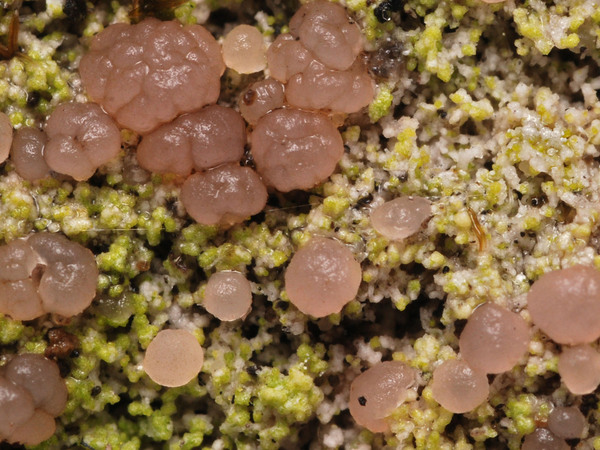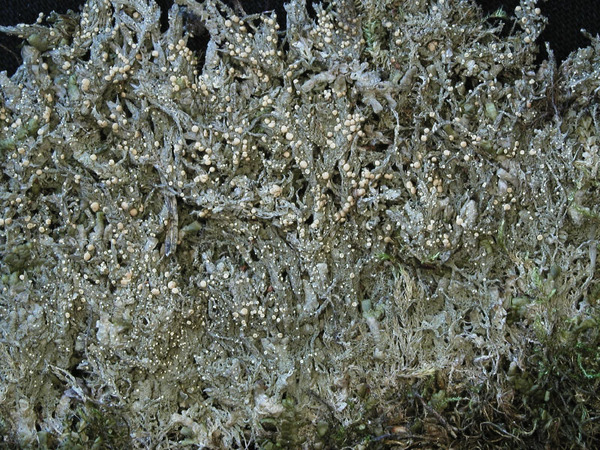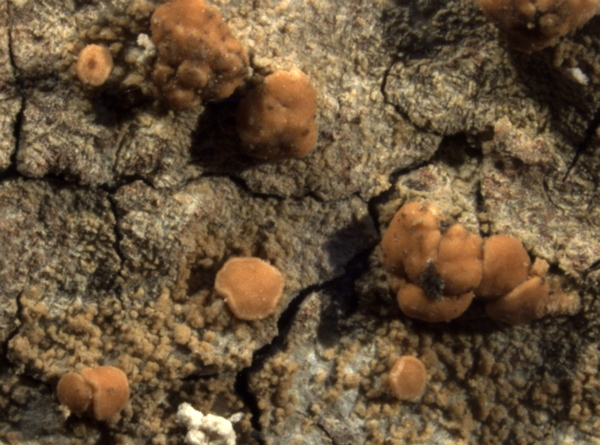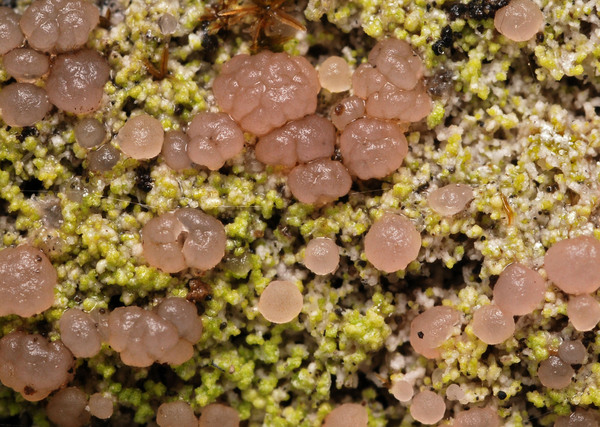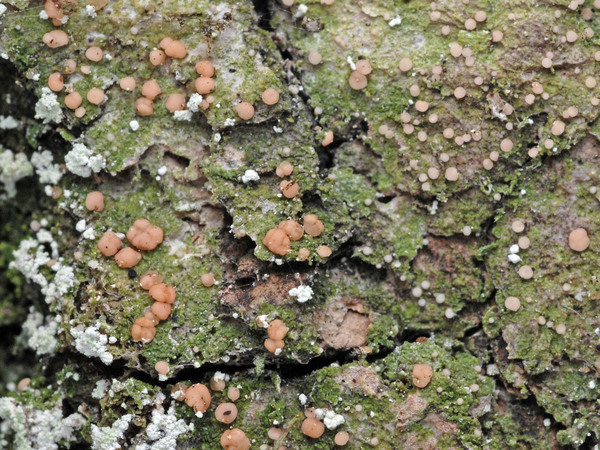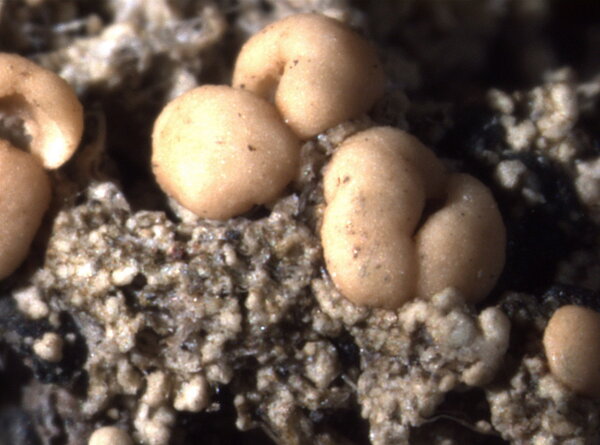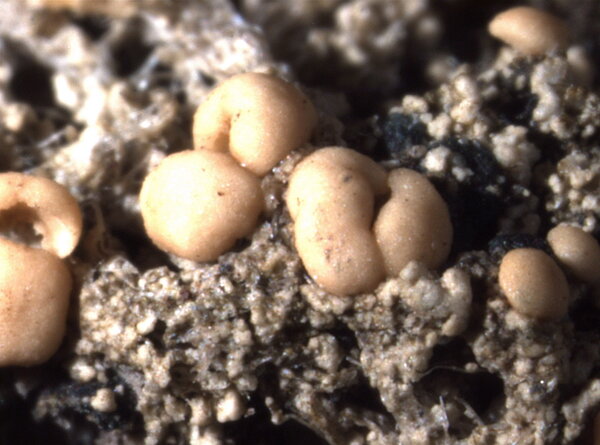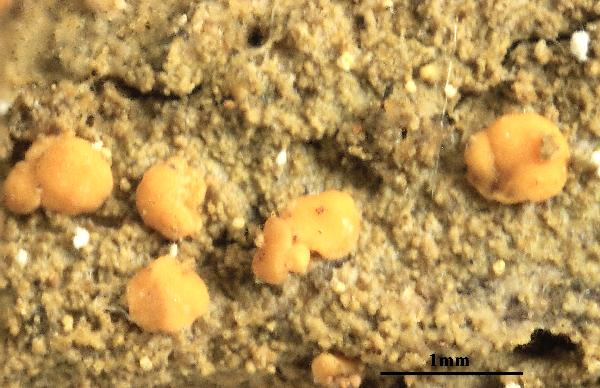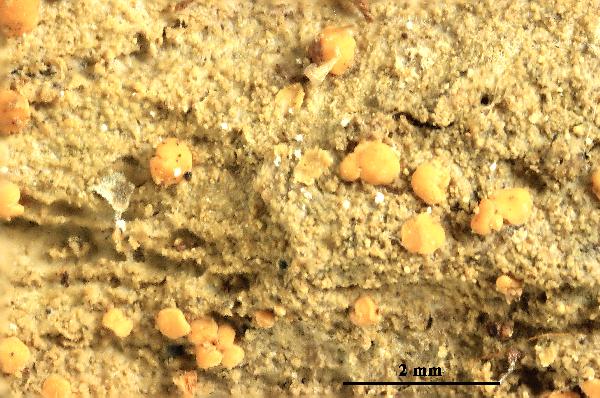Mycobilimbia carneoalbida (Müll. Arg.) S. Ekman & Printzen
in Nash & al., Lichen Flora Gr. Sonoran Desert Reg., 2: 366, 2004. Basionym: Patellaria carneoalbida Müll. Arg. - Flora, 51: 50, 1868.
Synonyms: Bacidia carneoalbida (Müll. Arg.) Coppins; Bacidia sphaeroides auct. p.p. non (Dicks.) Zahlbr.; Biatora carneoalbida (Müll. Arg.) Coppins
Distribution: N - VG, Ven, TAA, Lomb, Piem, Emil (Fariselli & al. 2020), Lig. C - Tosc (Ravera & al. 2025), Laz. S - Camp. Pugl, Cal (CLU 8697).
Description: Thallus crustose, episubstratic, grey to pale greenish, continuous, rather thick, coarsely granular or warted, esorediate. Apothecia biatorine, 0.4-1.4 mm across, sessile and constricted at base, at first almost flat but soon convex and more or less globose, often confluent and tuberculate, pale yellow-orange to almost ivory-white, epruinose, the margin at first distinct and concolorous with or slightly paler than disc, but soon excluded. Proper exciple prosoplectenchymatous, of radiating, branched and anastomosing hyphae, colourless to yellowish in upper part, 60-80 µm wide laterally; hymenium colourless, but often with diffuse streaks of a pale yellow pigment, 60-75 µm high; paraphyses 1.5-2 µm thick at base, more or less clavate, the apical cells up to 5 µm wide; subhymenium 35-55 μm high; hypothecium 120-240 μm high, colourless or pale yellow. Asci 8-spored, cylindrical-clavate, with a K/I+ blue apical dome penetrated by a narrow, K/I- apical cushion surrounded by a narrow, deeply K/I+ blue zone, the wall K/I- but surrounded by an I+ red-brown and K/I+ blue outer layer, the ocular chamber small, Biatora-type. Ascospores (0-)3-septate, hyaline, ellipsoid to fusiform, straight, 11-22 x 4-7 µm. Photobiont chlorococcoid. Spot tests: K-, C-, KC-, P-, UV-. Chemistry: without lichen substances.Note: on bark, mosses and plant debris, more rarely directly on rock in upland areas with frequent fog. The species was frequently confused with other taxa and Italian material needs revision.
Growth form: Crustose
Substrata: bark, soil, terricolous mosses, and plant debris
Photobiont: green algae other than Trentepohlia
Reproductive strategy: mainly sexual
Commonnes-rarity: (info)
Alpine belt: rare
Subalpine belt: rather rare
Oromediterranean belt: absent
Montane belt: very rare
Submediterranean belt: absent
Padanian area: absent
Humid submediterranean belt: absent
Humid mediterranean belt: absent
Dry mediterranean belt: absent

Predictive model
Herbarium samples
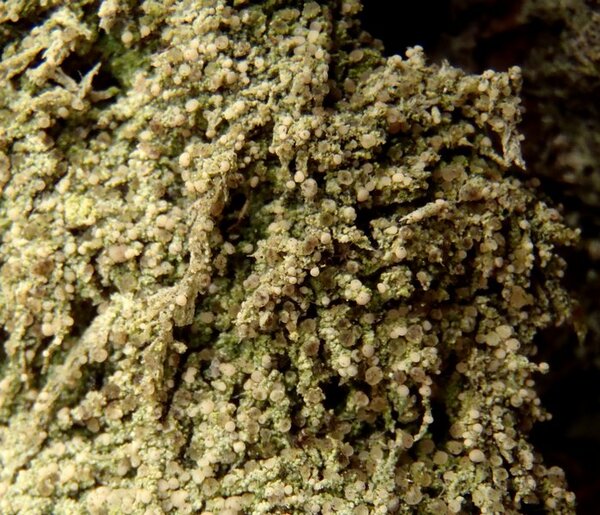

Curtis Randall Björk – CC BY-SA 4.0
British Columbia, Clearwater Valley Date: 2012-04-04 On moss at base of large Populus tremuloides in swamp forest
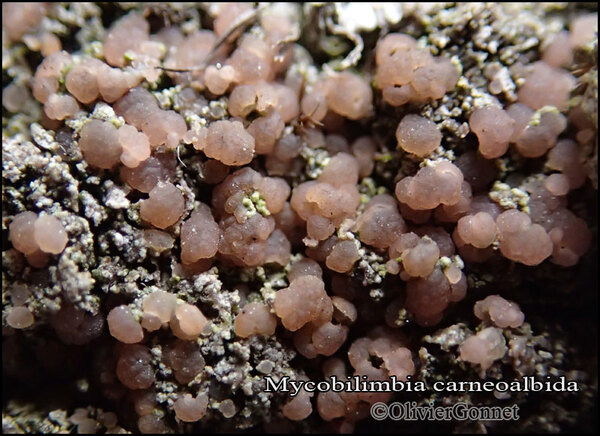
Courtesy Danièle et Olivier Gonnet - Source: https://www.afl-lichenologie.fr/Photos_AFL/Photos_AFL_M/Mycobilimbia_carneoalbida.htm
France, Chemin Chapelle St Barthélémy, alt. 2025 m - Haute-Savoie
24/9/2014
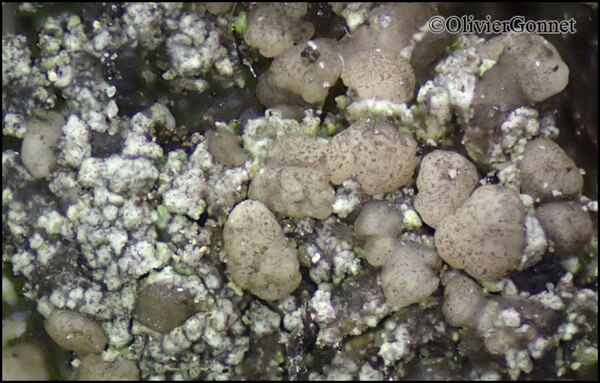
Courtesy Danièle et Olivier Gonnet - Source: https://www.afl-lichenologie.fr/Photos_AFL/Photos_AFL_M/Mycobilimbia_carneoalbida.htm
France, Chapelle Sainte Marguerite, alt. 2240 m - Termignon - Savoie - (73) - trouvé sur mousses saxicoles
25/6/2015
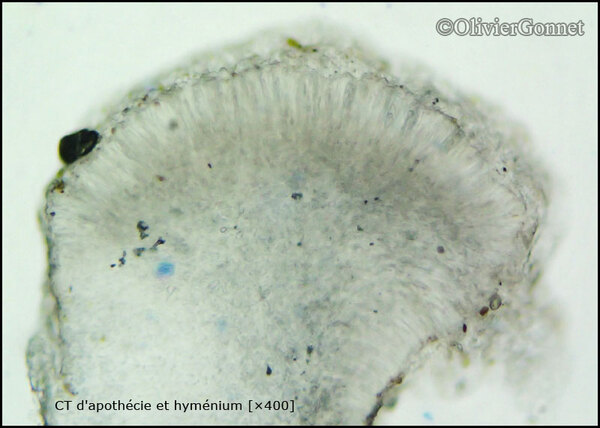
Courtesy Danièle et Olivier Gonnet - Source: https://www.afl-lichenologie.fr/Photos_AFL/Photos_AFL_M/Mycobilimbia_carneoalbida.htm
France, Chapelle Sainte Marguerite, alt. 2240 m - Termignon - Savoie - (73) - trouvé sur mousses saxicoles
25/6/2015
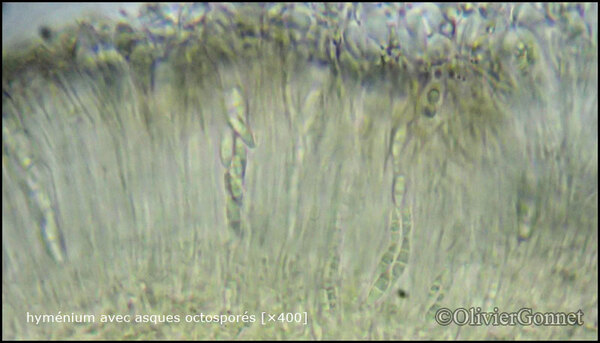
Courtesy Danièle et Olivier Gonnet - Source: https://www.afl-lichenologie.fr/Photos_AFL/Photos_AFL_M/Mycobilimbia_carneoalbida.htm
France, Chapelle Sainte Marguerite, alt. 2240 m - Termignon - Savoie - (73) - trouvé sur mousses saxicoles
25/6/2015
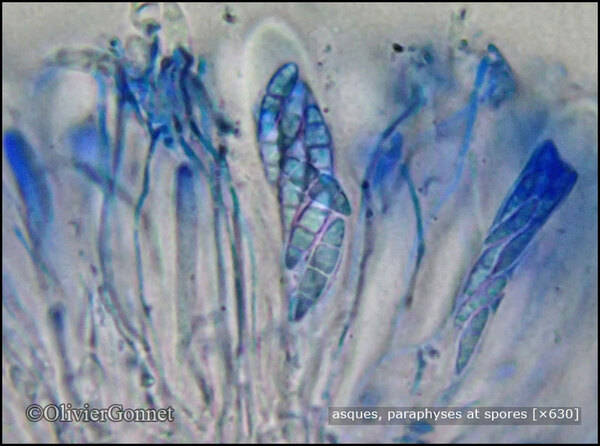
Courtesy Danièle et Olivier Gonnet - Source: https://www.afl-lichenologie.fr/Photos_AFL/Photos_AFL_M/Mycobilimbia_carneoalbida.htm
France, Chapelle Sainte Marguerite, alt. 2240 m - Termignon - Savoie - (73) - trouvé sur mousses saxicoles
25/6/2015
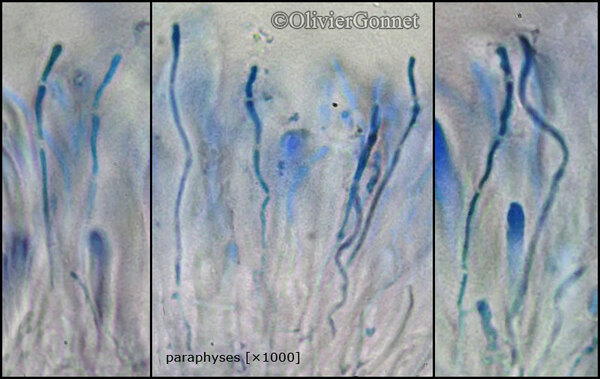
Courtesy Danièle et Olivier Gonnet - Source: https://www.afl-lichenologie.fr/Photos_AFL/Photos_AFL_M/Mycobilimbia_carneoalbida.htm
France, Chapelle Sainte Marguerite, alt. 2240 m - Termignon - Savoie - (73) - trouvé sur mousses saxicoles
25/6/2015
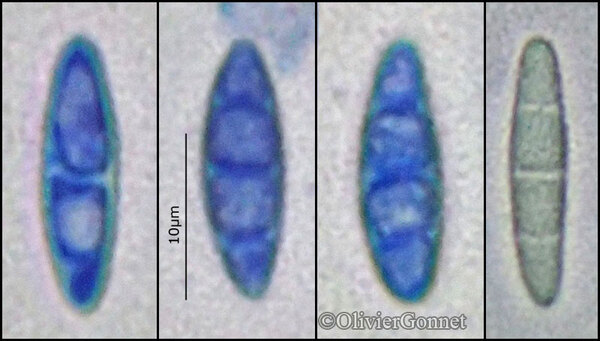
Courtesy Danièle et Olivier Gonnet - Source: https://www.afl-lichenologie.fr/Photos_AFL/Photos_AFL_M/Mycobilimbia_carneoalbida.htm
France, Chapelle Sainte Marguerite, alt. 2240 m - Termignon - Savoie - (73) - trouvé sur mousses saxicoles
25/6/2015
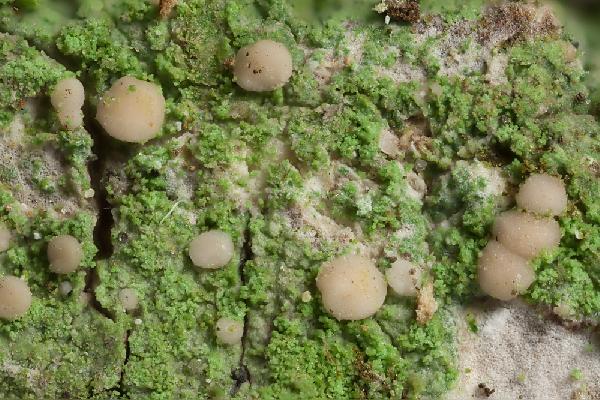
Ulrich Kirschbaum CC BY-SA 4.0 - Source: https://www.thm.de/lse/ulrich-kirschbaum/flechtenbilder
Coll/ident. by D. Teuber as M. sphaeroides).
Growth form: Crustose
Substrata: bark, soil, terricolous mosses, and plant debris
Photobiont: green algae other than Trentepohlia
Reproductive strategy: mainly sexual
Commonnes-rarity: (info)
Alpine belt: rare
Subalpine belt: rather rare
Oromediterranean belt: absent
Montane belt: very rare
Submediterranean belt: absent
Padanian area: absent
Humid submediterranean belt: absent
Humid mediterranean belt: absent
Dry mediterranean belt: absent

Predictive model
| Herbarium samples |


Curtis Randall Björk – CC BY-SA 4.0
British Columbia, Clearwater Valley Date: 2012-04-04 On moss at base of large Populus tremuloides in swamp forest

Courtesy Danièle et Olivier Gonnet - Source: https://www.afl-lichenologie.fr/Photos_AFL/Photos_AFL_M/Mycobilimbia_carneoalbida.htm
France, Chemin Chapelle St Barthélémy, alt. 2025 m - Haute-Savoie
24/9/2014

Courtesy Danièle et Olivier Gonnet - Source: https://www.afl-lichenologie.fr/Photos_AFL/Photos_AFL_M/Mycobilimbia_carneoalbida.htm
France, Chapelle Sainte Marguerite, alt. 2240 m - Termignon - Savoie - (73) - trouvé sur mousses saxicoles
25/6/2015

Courtesy Danièle et Olivier Gonnet - Source: https://www.afl-lichenologie.fr/Photos_AFL/Photos_AFL_M/Mycobilimbia_carneoalbida.htm
France, Chapelle Sainte Marguerite, alt. 2240 m - Termignon - Savoie - (73) - trouvé sur mousses saxicoles
25/6/2015

Courtesy Danièle et Olivier Gonnet - Source: https://www.afl-lichenologie.fr/Photos_AFL/Photos_AFL_M/Mycobilimbia_carneoalbida.htm
France, Chapelle Sainte Marguerite, alt. 2240 m - Termignon - Savoie - (73) - trouvé sur mousses saxicoles
25/6/2015

Courtesy Danièle et Olivier Gonnet - Source: https://www.afl-lichenologie.fr/Photos_AFL/Photos_AFL_M/Mycobilimbia_carneoalbida.htm
France, Chapelle Sainte Marguerite, alt. 2240 m - Termignon - Savoie - (73) - trouvé sur mousses saxicoles
25/6/2015

Courtesy Danièle et Olivier Gonnet - Source: https://www.afl-lichenologie.fr/Photos_AFL/Photos_AFL_M/Mycobilimbia_carneoalbida.htm
France, Chapelle Sainte Marguerite, alt. 2240 m - Termignon - Savoie - (73) - trouvé sur mousses saxicoles
25/6/2015

Courtesy Danièle et Olivier Gonnet - Source: https://www.afl-lichenologie.fr/Photos_AFL/Photos_AFL_M/Mycobilimbia_carneoalbida.htm
France, Chapelle Sainte Marguerite, alt. 2240 m - Termignon - Savoie - (73) - trouvé sur mousses saxicoles
25/6/2015

 INDEX FUNGORUM
INDEX FUNGORUM
 GBIF
GBIF
 DOLICHENS
DOLICHENS
